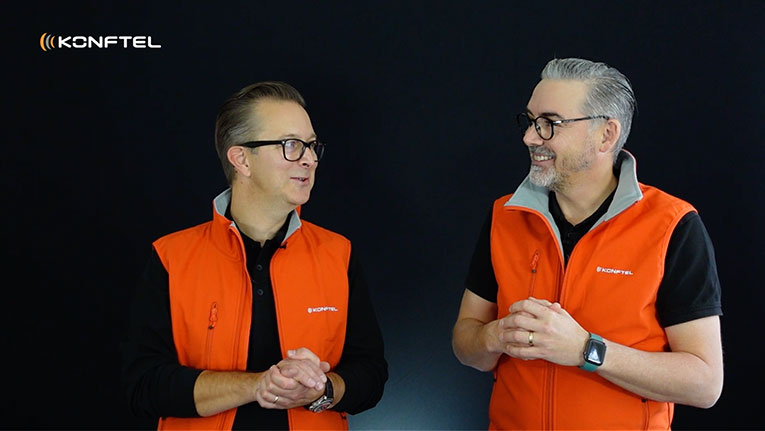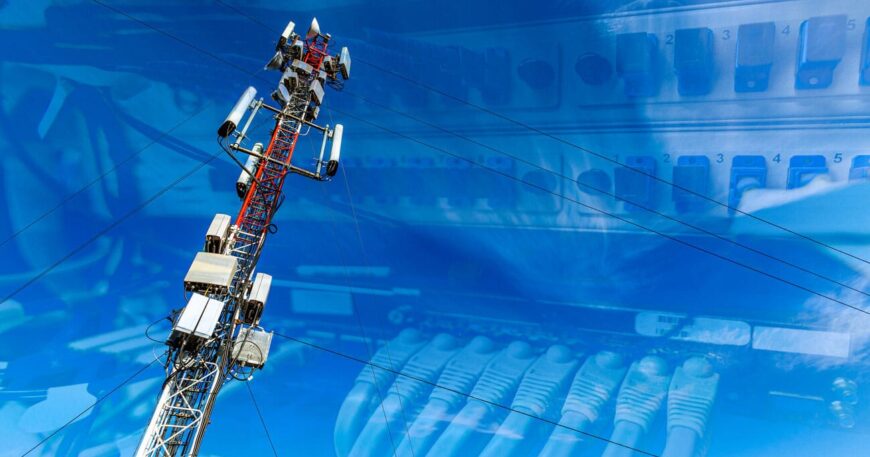- Home
- About us
- Products & Solutions
- Siddharsh Systems & Solutions Private Limited.
- Alliances
- Services
- Insight
- Contact us
- November 12, 2021
- By Animesh Singh
- Siddharsh
How to cut your way through the video conferencing jungle
Every meeting space needs to be prepared for high quality video communication as the world of work continues to evolve. But with the market flooded with products and organisations having their own usage and room requirements, it can be a bit of a jungle to find a way through! So we’ve created an interactive Room Type Guide to help match every room type with a suitable solution. In addition we’ve also produced a special video which highlights the new tool and also lots of other helpful information as offices begin opening back up. Watch us discuss how you can cut through the conferencing jungle: It was great fun being thrust into the video spotlight with my colleague Jörgen Rönnqvist. You could say it was a ‘jungle adventure’ as we spent around 15 minutes providing lots of tips and advice around the latest market insights, hybrid working trends and product innovations. Jörgen conducted a guided tour of the room guide to show different room dynamics and how easy it is to set up equipment. You can view the guide for yourself here. We also showcased how an educational organisation in Sweden has adopted hybrid teaching – and highlighted how Konftel has achieved a new industry accolade following Climate Neutral certification which was an industry first. In meetings not everyone will be physically present in the future. Easy to use, high quality video services will be everywhere and anywhere. Flexible solutions that support many different collaboration platforms will be crucial too to maximize the user experience. The use of video meeting rooms will continue to increase and change. This puts pressure on organisations to be ready. The time to act is now.
- November 12, 2021
- By Animesh Singh
- Siddharsh
Saving Energy with Fiber Optic Networks?
When it comes to protecting the atmosphere, FTTH is a good choice. This is because modern broadband provision with fiber optic networks requires much less energy in comparison with other technologies. The carbon footprint speaks for fiber optics. Is that a good question? You will probably ask whether it is really important to examine the carbon footprint of broadband networks. You may be afraid that this is about the greenwashing of a major industry. Rumors are circulating that the Internet and data transmission are climate-damaging energy guzzlers. As a responsible manufacturer of network technology for broadband service, we have taken a close look at this issue. This is because R&M wants to help minimize CO2 emissions quickly and sustainably. We want to give our customers the best possible orientation when they invest in networks. Broadband networks are currently being expanded all over the world and many new, extended FO networks are being laid. R&M supports and supplies numerous large-scale projects. That’s why the carbon footprint issue definitely plays an important role for us. Current studies and a few facts provide answers. To the facts Broadband networks require electrical energy. Data does not come into our homes from the cloud under its own steam. Access networks account for 70 % to 80 % of the power consumption in this sector. There are quite a few electrical systems working around the clock between the central office of the network operator and the subscriber. These include routers, switches, and transceivers. All electronic equipment ultimately contributes to the emission of greenhouse gases and must therefore be geared towards energy efficiency. Telecommunications services today already consume two to three percent of the energy generated worldwide. Data traffic is increasing, for example, through video streaming, online gaming, and teleworking. Data transmission can account for up to 80 % of the power consumption of video streaming. People have fun watching YouTube videos or Netflix movies. But it can’t be done without electricity. The energy efficiency of the various transmission technologies and media (fiber optic, copper, cellular phone networks) differs considerably. There is a big difference between transmitting light signals via fiber optics, transmitting electrical signals via copper cable, or high-frequency signals via an antenna. In terms of data transmission, 1 kg of glass is as powerful as 1000 kg of copper. Based on energy consumption per bit rate, copper-based broadband networks (VDSL2 vectoring, super vectoring) consume up to seventeen times more electricity than full-fiber networks. This is according to a report from the German broadband association BREKO from January 2021. The industry consultants at WIK Consult have calculated that telecom companies can save 60 % of energy costs by switching off the copper networks. One result of the German research project Green Cloud Computing in September 2020 confirms: «CO2 emissions are at their lowest when HD video is streamed to the home via a fiber optic connection». Each hour of video streaming produces two grams of CO2. The value refers to the effectiveness of the data transmission and the data center where the video is stored. In the case of copper cables (VDSL transmission), the figure is four grams and for 5G radio five grams of CO2 per hour. Clear result From R&M’s point of view, the situation is clear: When it comes to protecting the atmosphere, Fiber to the Home is a good choice. Anyone who opts for fiber optic networks is opting for the lowest possible power consumption in data transmission and thus the lowest possible CO2 emissions. Data traffic does not work entirely without electricity. But we can all opt for devices that are as energy-efficient as possible and have a climate-friendly power supply. In addition, the BREKO study adds the following: Fiber optic networks are more reliable than copper-based alternatives with fewer service interruptions, fewer failures, and lower maintenance costs. This also saves energy. One more thing Fiber optics are, in a way, sustainable by nature. They are made of silicate, which is available in virtually unlimited quantities. The raw material can be extracted and recycled at a reasonable cost. Optical fibers are light and thin. This means they can be transported with minimal effort. R&M also supports network operators with solutions that ensure sustainability and high efficiency right from the planning and construction phase. I would like to invite you to engage in an in-depth debate on sustainability. Let’s swap ideas on how to constantly improve the carbon footprint of the telecommunications and network industry. Write your comment at the bottom of the page.
- November 12, 2021
- By Animesh Singh
- Siddharsh
Worries about Artificial Intelligence
Artificial intelligence learns faster than anybody had ever imagined and it accesses massive amounts of unprotected data. Dr. Lars Jaeger reveals his thoughts on the subject. Mega Progress in Just a Few Hours Artificial intelligence (AI) is making surprisingly fast progress. So what has made this technology suddenly become so powerful? And what does that ultimately mean for us? R&M guest author Dr. Lars Jaeger, a well-known scientist, author and entrepreneur takes a look at these questions. Computers learn using patterns The secret behind the fast progress of AI is what is referred to as deep learning: an architecture of artificial neurons and their interconnections inspired by the human brain. These networks are trained on massive quantities of labeled data. Then, they use what they have learned, i.e. how they have chosen their many different parameters, based on the learning data, to detect subtle patterns in other mounds of data. This data is available online, e.g. data on a person’s behavior, contacts, and interests. Internet companies such as Google, Facebook, Microsoft, Baidu, Tencent, and Alibaba collect this data and feed it to their AI machines. AlphaGo shows how it’s done Google’s AlphaGo demonstrated just how quickly AI can learn. Only 18 months after AlphaGo’s spectacular victory over the best human Go, player, Google had created a new version of a Go-playing artificial intelligence. AlphaGo Zero did not need to be fed with past games anymore. After just three days and 4.9 million games, the artificial genius had reached a capability in the Go game that enabled it to beat its predecessor 100 games to zero in 100 games. And AlphaGo Zero had similar success in chess. No more limits An AI such as AlphaGo Zero is so powerful because it is “no longer constrained by the limits of human knowledge,” says one of the creators of AlphaGo and AlphaGo Zero, Demis Hassabis. “That is certainly a statement that provides some food for thought,” warns Lars Jaeger. Where is the protection? Leading scientists and critical entrepreneurs claim that AI can be as dangerous to humans as nuclear weapons. Experts are begging governments to provide a framework of laws and regulations. This is based on their concern that policymakers oversleep technological developments, do not take them seriously or simply do not understand them at all. Dr. Lars Jaeger also warns of the consequences of using AI. He expects an active shaping of the technology by society as well as democratic legitimization. His critical conclusion: “Intervention at the state level has only ever taken place when the technology was already ‘out there’ and its dangers had become obvious. In the future, that will no longer be enough! Surrendering such an important playing field as AI to the American capitalists or Chinese communists could prove fatal.” Good AI requires good connectivity! Without fail-safe, clean connectivity, AI will not work. With its solutions, R&M is, on the one hand, providing the basis for artificial intelligence to do their job reliably and without interference, but, on the other, would like to call for responsible dealings with this new technology. Companies should use the new possibilities carefully to market their products successfully, but should never lose sight of the overall ethical picture and should sensitize their stakeholders accordingly. With his commitment and dedication, scientist and academic Lars Jaeger is making a valuable contribution to sensitizing society to the importance of reliable dealings with modern technologies. His latest book «Braving more future – how we all benefit from progress» was published in the summer of 2019, initially in German
- November 12, 2021
- By Animesh Singh
- Siddharsh
5G Services Need Time, Cabling and Data Centers
As one of the first countries in Europe, Switzerland auctioned licenses for 5G services in February 2019. The market is raring to go. But the rollout needs time. Data traffic up to 100 times faster 5G technology facilitates mobile Internet connections up to 100 times faster than the current standard 4G. The transmission capacity increases by a factor of 1000. The latency is under 1 millisecond per ping. The 5G network – to its full extent – will be able to link 100 billion devices at the same time. Electricity consumption will drop by up to 90 % per mobile service. This means it is an attractive technology that will open up numerous new options. 5G can support digital transformation and drive it forward. The technical advantages play just as much a role for the security- and time-critical communication between vehicles and manufacturing plants as for smart cities and telemedical services. Consequently, the whole of the telecommunications world is currently focusing on 5G. Virtually every day, network operators, test users, and chip manufacturers are reporting on the latest developments. Numerous pilot projects show diverse application possibilities. Rollout takes time The license awarding and pilot schemes should not gloss over the fact that patience is a major requirement. It will take a few years to get devices, applications, service and business models in place. In October 2018, market researchers from BMI Research reported that there are currently only a few applications that specifically need 5G. The mass market with affordable devices has yet to be developed. Suitable smartphones are due to be launched in 2019. The nationwide rollout presents network operators with a number of challenges. They need approval for lots of new antenna sites. 5G needs more FO networks A further challenge is being added to the mix. In the future, it will no longer be sufficient to connect the base stations with each other using radio links. The antennas have to be integrated into FO networks. Fiber to the Antenna (FTTA) is the name of the investment program that now has to be mastered. Apart from that, the antennas have to be connected with local or regional edge data centers. This is the only way the expected quantities of data will be able to be transported and processed in real-time. Depending on the location, one and a half to three times as many base stations and two to three times more optical fibers than is the case to date will be required. FTTA requires innovative cabling solutions. R&M is working on the development of such solutions and is helping mobile communication suppliers to create 5G infrastructures.
- November 12, 2021
- By Animesh Singh
- Siddharsh
5G: Planning Fiber Optics for Macro Cells
It sounds easy: Screw a few MIMO antennas to the masts. Installing active equipment, retrofitting radio station baseband units, or, in the case of a centralized RAN structure, consolidating them in the central office, loading new software – the mobile infrastructure is already up to the 5G standard. But there are still a few tasks to be solved before the necessary fiber optic infrastructures (backbone) for 5G are also available to ensure this will actually work. A different 5G perspective: Layer 1 Without close-meshed FO infrastructures on the ground, there are no sophisticated 5G services that can be broadcast via the antennas. The new, economically attractive applications and business cases of the 5G era, particularly in the business customer segment, require the real-time transport of huge amounts of data. From the core network to the radio heads, continuous and closely meshed fiber optic Layer 1 infrastructure must be available to ensure this. Easier said than done. Fiber to the Antenna (FTTA) is posing a challenge to the various stakeholders. Manufacturers of active devices and antenna systems, tower companies, neutral hosts, mobile and private network operators, service providers, cities and their communication service providers, municipal utilities, and land and building owners – they all have to deal with the topic of cabling. Quickly upgrading macro cells This is about the additional Layer 1 capacity and connectivity for macro cells. It is a matter of rapidly upgrading existing cellular phone networks and masts to 5G. The Layer 1 hurdles for small cells, pico cells, private networks, and for 5G in city centers and buildings, etc. also need to be examined more closely. The task is to consolidate and centralize cabling infrastructures for macro cells as well as provide additional capacities in terms of fiber optics and power supply. A colorful mix of existing fiber optic cabling for macro cells has to be integrated into new 5G infrastructures. This 5G upgrade inevitably leads to complex cabling infrastructures in the access, midhaul and fronthaul segments. Naturally, cabling and connectivity have to be absolutely reliable for the demanding 5G applications to work. The focus is on flawless components, simple and therefore virtually error-free installation, interruption-free maintenance, and regular optimization options at every network level. Planning every meter precisely The cabling path from central offices through building and outdoor cabling to the boxes, terminals, and remote radio units can be challenging. Sometimes it’s just a few hundred meters, sometimes it’s miles. Sometimes vertical, sometimes horizontal cabling paths. Sometimes indoor, outdoor, or underground cabling for radio masts, or wall or distributed roof structures on buildings of varying heights. In addition to existing power, copper, and fiber optic cables, new, additional cable bundles with larger diameters, more copper, and more fiber optic capacity usually have to be installed. And that means opening and securely closing splice closures, shafts, distribution cabinets, riser zones, cable ducts, and boxes, or expanding them or replacing them with new ones. Depending on the location, additional groundwork, room rental, additional distribution cabinets, container solutions, or wall cutouts and roof openings may be required. Every meter of fiber optic cabling and the associated power supply for new active equipment on the 5G roadmap has to be planned precisely. A further hurdle, for example, maybe the space available for these installations. While network operators want to make the most of 5G frequencies, it is not always possible to create more space for the equipment or build additional masts at every macro-cell location. The plot area or space on a roof is usually limited, the load capacity of the existing masts is often exhausted and the construction of additional masts requires lengthy approval procedures. In other words, there is no «one solution fits all» approach. 5G cabling has to be planned individually to suit the location and operator. Defining architectures Other tasks: defining network architecture, technology, and service models. From the perspective of cabling, for example, the question to be answered is: Who is doing the building? Network operators, tower companies, and neutral hosts for fiber backbone networks have different priorities. Will it be a single or multi-operator location? Can market participants share fiber optic networks and central offices for several cell sites in a competitive manner? Can approval procedures be simplified and construction costs thus minimized? Is it to be a separate, direct point-to-point fiber connection or can an existing fiber optic route from another FTTx network be used in the context of fixed-mobile convergence? How can the effort involved in cabling be minimized and standardized in each case? How and where should remote radio heads, active antenna systems, associated baseband units, distributor boxes, power cabling, and other equipment be positioned? Which protocols and multiplex processes run on the optical networks and which connectivity do they require or are they already using? Does the active equipment come from a single manufacturer? Or does the relevant network operator employ a multi-vendor policy for 5G Core and 5G Radio shares because it is technically sensible, more cost-effective, or historically given? It also needs to be clarified whether existing and new products are interoperable, which interfaces, connectivity, and cabling solutions are used and whether the designs harmonize. Looking underground The question of whether existing FO networks could be used is very complex. Possible resources: Telephone, CATV, FTTH networks Campus and building networks Fiber optics from local, supra-regional utilities or from rail network operators and their communication infrastructure This topic will be of major interest to network operators and investors as they can save money and time if they do not have to develop and build new FO routes themselves. However, evaluating, planning, and implementing suitable locations for branching off existing networks requires time and expertise as well as suitable connecting technologies and system solutions. Cities and landowners often don’t know exactly what’s in the ground or what’s inside the switch box built years ago. There are numerous old channels, shafts, and distribution cabinets that would have space for additional and new power and fiber








